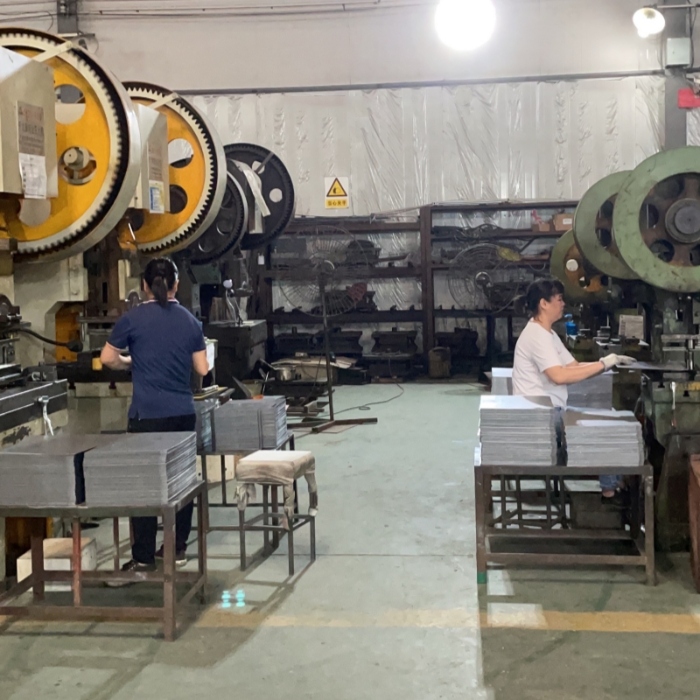Types Of Sheet Metal Fabrication Techniques, Part One
Types Of Sheet Metal Fabrication Services
In accordance with the unique demands of each project, parts undergo a series of specific processes tailored to achieve the desired final product. Here are some commonly utilized sheet metal fabrication techniques:

Bending/ Press Braking
Bending stands as a cornerstone process within sheet metal processing, enabling the transformation of steel plates into diverse parts that meet precise specifications. Traditionally, the flexibility of conventional molds allows for bending angles ranging from 78° to 180°, offering a considerable degree of customization. However, advancements in specialized molds have pushed the boundaries further, allowing for minimum bending angles as low as 30°.
This heightened precision, achievable with special molds, is instrumental in addressing the intricate demands of modern sheet metal processing. With an impressive accuracy of ±0.5°, manufacturers can confidently navigate challenges related to part accuracy, particularly when dealing with variations in height and complex shapes.
The versatility offered by these advanced bending techniques extends beyond mere precision. Manufacturers now possess the capability to tailor product specifications according to evolving production demands. This agility not only caters to specific customer design preferences but also aligns with dynamic market trends, ensuring competitiveness and relevance in a rapidly changing landscape.
In essence, the evolution of bending technology in sheet metal processing underscores a commitment to excellence and innovation. By embracing these advancements, manufacturers can achieve unparalleled levels of accuracy, flexibility, and adaptability, thus driving efficiency and success in their operations.
V Groove
V Grooving serves as a vital auxiliary process in stainless steel fabrication, particularly for bending both metal and non-metal materials. Specialized equipment and tools are utilized to carve V grooves along the bending lines, facilitating easier bending and forming while minimizing outer R (radius). This technique enables precise bending angles and supports the use of bending machines or manual bending methods.
In scenarios where standard bending techniques fall short due to unique structural designs, sizes, or complexities of sheet metal parts, grooving becomes essential. For instance, when dealing with U-shaped structural parts with minute inner cavities, the creation of double V grooves through grooving becomes indispensable. This method ensures the completion of processing while meeting stringent product appearance requirements.
The depth, width, and angle of V grooves are meticulously controlled during the grooving process through adjustments in feed rate and the shape of the planer blade. Grooving thus emerges as a derivative of bending, effectively addressing the diversification and intricacies prevalent in sheet metal fabrication processes.
Punch Press
The punch press exerts pressure on the material, causing it to undergo plastic deformation and achieve the desired shape and precision. To accomplish this, it requires a set of molds, consisting of an upper mold and a lower mold, between which the material is positioned. As pressure is applied, the material deforms, and the reaction force generated by this process is absorbed by the punch machine body.
In sheet metal stamping processes, mechanical punches are commonly utilized. These punches rely on compressed air supplied by a pump, which enters the cylinder through a solenoid valve. This compressed air drives the piston within the main shaft, causing it to move downward and generate momentum. As a result, the workpiece placed in the mold undergoes specified deformation, ultimately forming the desired processed parts.
Plate Rolling
Plate Rolling is a common metal processing method, especially in the sheet metal manufacturing process. This process involves using a plate rolling machine to roll metal sheets into oval or cylindrical shapes. The main purpose of plate rolling is to give flat metal materials a specific shape to meet product design and functional requirements.
The plate rolling process consists of several key steps. First, choose metal sheets of appropriate size and shape and place them on the worktable of the plate rolling machine. Then, gradually press the sheet into the desired shape using the rollers of the plate rolling machine. Throughout the process, it is necessary to continuously adjust the parameters of the plate rolling machine, such as plate rolling pressure and roller spacing, to ensure that the metal sheet is evenly pressed into the target shape.
The advantage of the plate rolling process is that it can handle various types and sizes of metal sheets and achieve high precision and efficiency processing in relatively short time. Additionally, plate rolling can reduce material waste of metal sheets as it can more effectively utilize raw materials.
Overall, plate rolling is an important metal processing method that provides an efficient way for the manufacturing industry to produce metal products of various shapes and sizes.
By leveraging these sheet metal fabrication techniques in combination or individually, manufacturers can efficiently transform raw materials into high-quality, bespoke products tailored to meet diverse project requirements.

